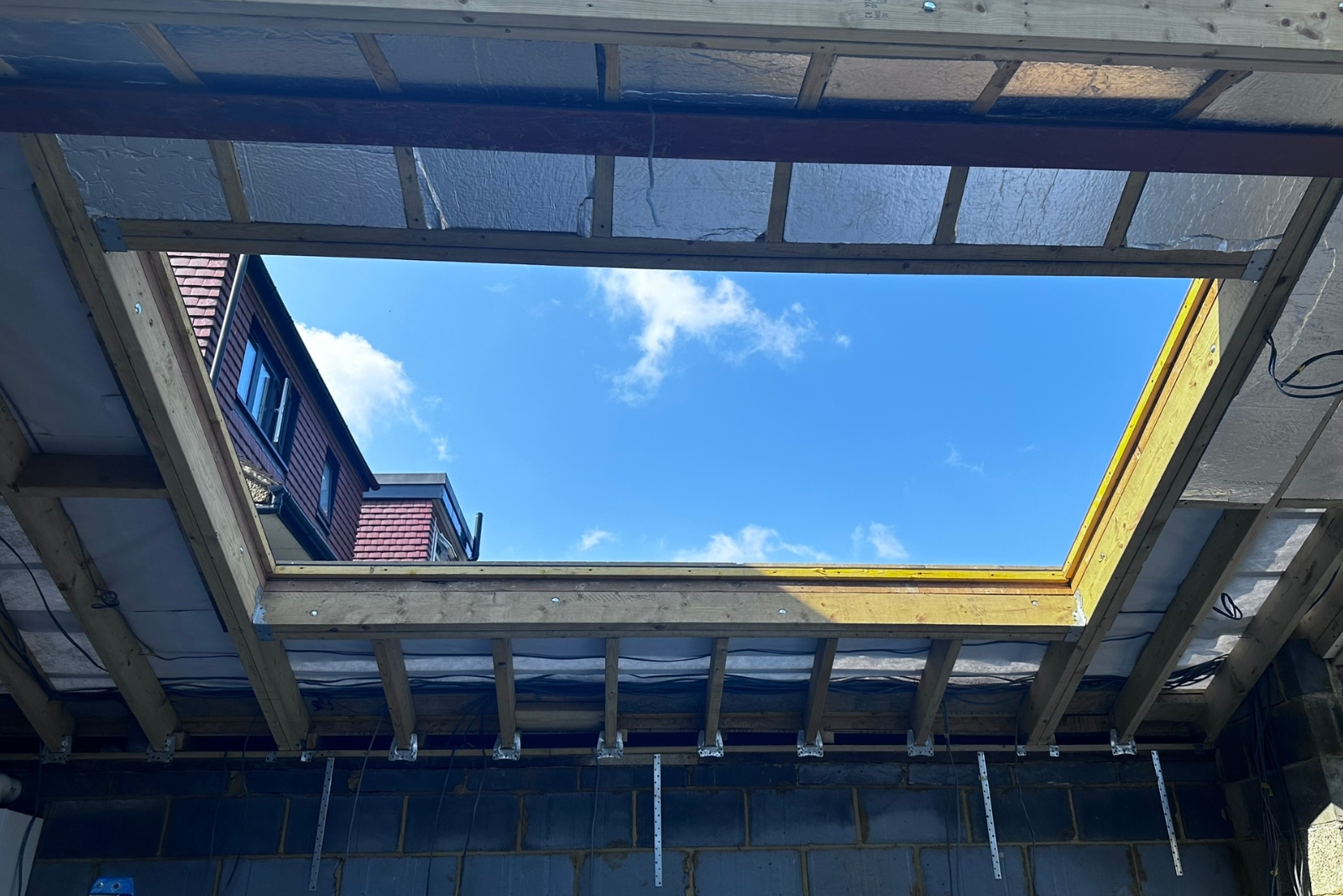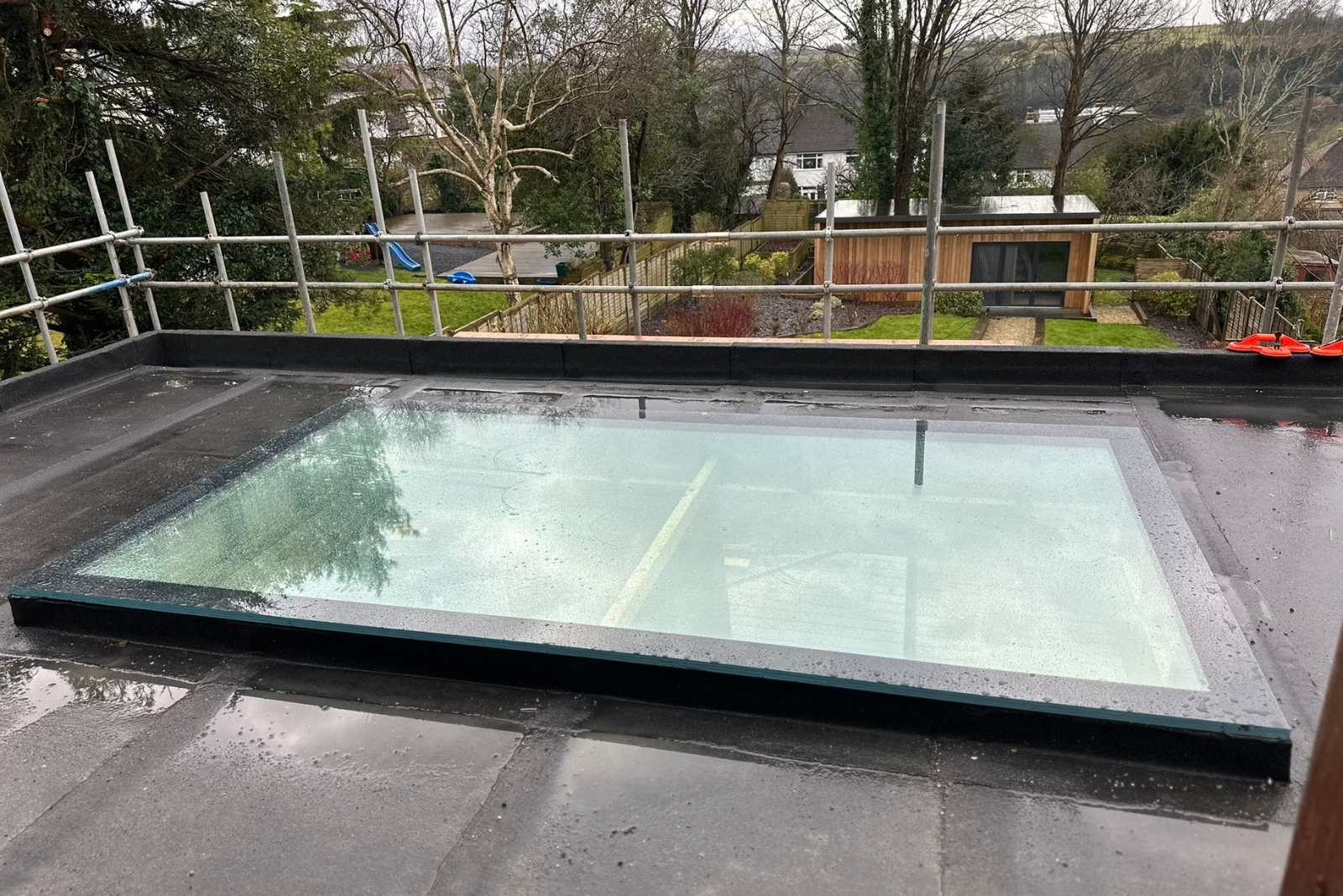How to Prevent Condensation on Rooflights and Skylights

Condensation on roof lights and skylights is one of the most common concerns among UK homeowners, especially during colder months. While it might seem like a bit of harmless fog on the glass, persistent Condensation can lead to mould, rot, and insulation issues.
In this expert guide, we explain what causes Condensation, how to prevent it, and what to look for when choosing the right roof light, with practical tips drawn from real installations and expert input. Whether installing a new unit or dealing with recurring Condensation on an older one, this article will help you manage it effectively.
Table of Contents
What Causes Condensation on Rooflights?
Condensation occurs when warm, moist indoor air hits a cold surface, like the glazing of a skylight, causing water vapour to turn into liquid droplets.
Common causes include:
Inadequate Ventilation (especially in kitchens and bathrooms)
Poor insulation or thermal bridging
High indoor humidity levels
Single glazing or low-spec double glazing
Cold weather and lack of air movement
"We see the worst condensation issues in poorly ventilated loft bedrooms and flat roof extensions. High humidity plus cold glass equals problems."
— Kieran Young, Building Inspector
How to Prevent Condensation on Rooflights
The good news is that condensation is manageable. Here are the top strategies:
1. Improve Ventilation
Use trickle vents on rooflights or windows
Install extractor fans in high-moisture rooms (bathrooms, kitchens)
Open windows/rooflights briefly each day to circulate fresh air
2. Choose High-Performance Glazing
Select double or triple-glazed units with warm-edge spacers
Look for Low-E coatings to reduce thermal transfer
Frameless rooflights offer excellent thermal insulation due to their minimal framing and triple-glazing options
3. Control Indoor Humidity
Use a dehumidifier in colder months
Keep houseplants, kettles, and tumble dryers from increasing moisture
Maintain indoor humidity around 40–60%
4. Improve Rooflight Installation Quality
Ensure no thermal bridging around the frame
Install an insulated upstand to reduce cold transfer
Always work with a professional, certified rooflight installer
Comparison Table: Condensation-Resistant Rooflight Features
| Feature | Fixed Frameless Rooflight | Basic Roof Window |
|---|---|---|
| Triple Glazing Option | ✅ Yes | ❌ Not always |
| Low-E Glass Coating | ✅ Yes | ✅ Sometimes |
| Insulated Upstand Compatibility | ✅ Yes | ❌ Rare |
| Built-In Trickle Ventilation | ❌ No (fixed unit) | ✅ Yes (opening units) |
| Air-Tight Installation Frame | ✅ Yes | ✅ Depends on the brand |
"We used a triple-glazed frameless skylight with a thermally broken upstand. Zero condensation — even in January."
— George & Maya, homeowners in Leicester

Real Use Case Examples
🏡 Sam's Kitchen Extension in Liverpool
"We had a condensation issue every morning on our old skylight. Upgrading to a frameless fixed model from Skylights.co.uk with better glazing and extractor fans solved it completely."
🏡 Tara's Loft Bathroom in Bournemouth
"We opted for an electric opening roof window. It opens automatically when humidity spikes. The combination of air movement and Low-E glass works wonders."
🏡 Ollie's Garden Room in Exeter
"Our timber-framed rooflight was sweating constantly. Switched to a triple-glazed frameless one with self-cleaning glass. No more issues."
FAQs: Condensation & Skylight Concerns
Condensation can still form if the glazing or seals are poor or the surrounding frame bridges cold air. Indoor humidity also plays a significant role.
Not necessarily. If the water forms only on the inside surface of the glazing and not between panes or around frames, it's Condensation, not leakage.
Check for:
Low U-values (under 1.5 W/m²K)
Triple glazing or Low-E glass
Insulated upstand or thermally broken frame
No, but they can be paired with mechanical or window-based ventilation systems for effective air control.
Calculate Your Skylight Size By Room
Installation Tips for Condensation Prevention
Use rooflights with thermally broken frames or insulated upstands
Choose products tested to British Standards (BS 6375, BS 9250)
Seal joints with appropriate vapour barriers and insulation
Avoid cutting corners on install quality — it makes a big difference
“The main mistake I see is poorly insulated perimeters. Even the best glass won’t help if cold air bridges into the frame.”
— Harriet James, RIBA Architect
Final Takeaways
✅ Condensation is caused by excess humidity meeting cold surfaces, especially poor glazing
✅ Solve it with better Ventilation, thermal performance, and humidity control
✅ Frameless rooflights with triple glazing are an ideal solution
✅ Always combine glazing upgrades with proper airflow management
Still dealing with rooflight Condensation? Contact us for expert help.



















